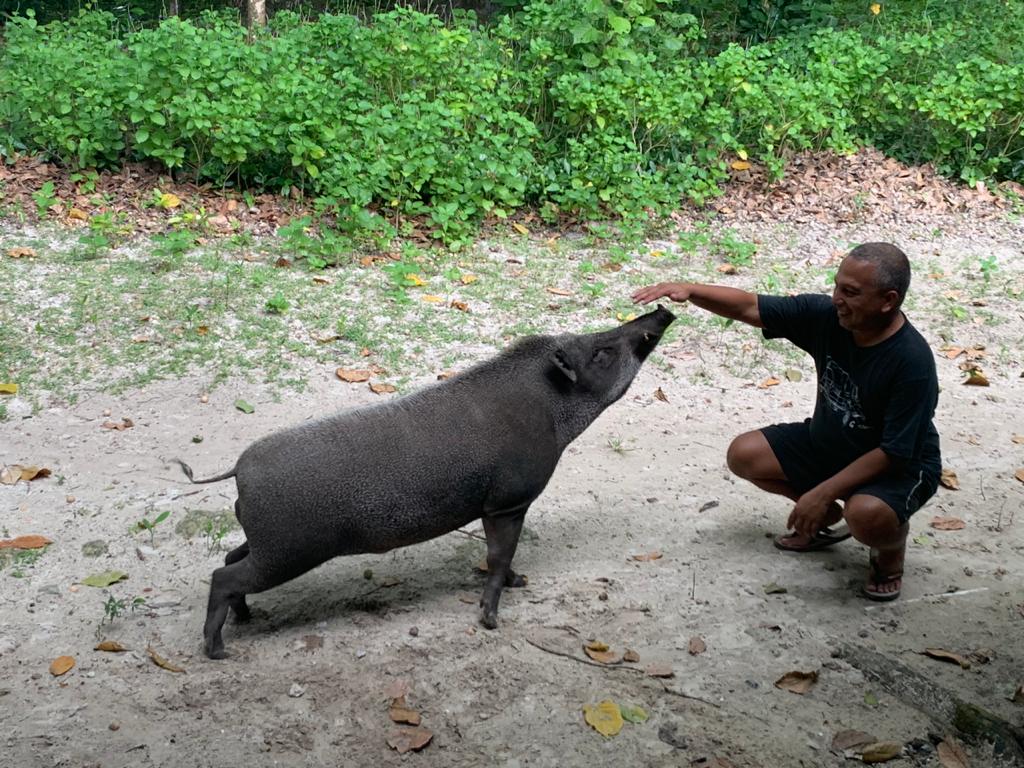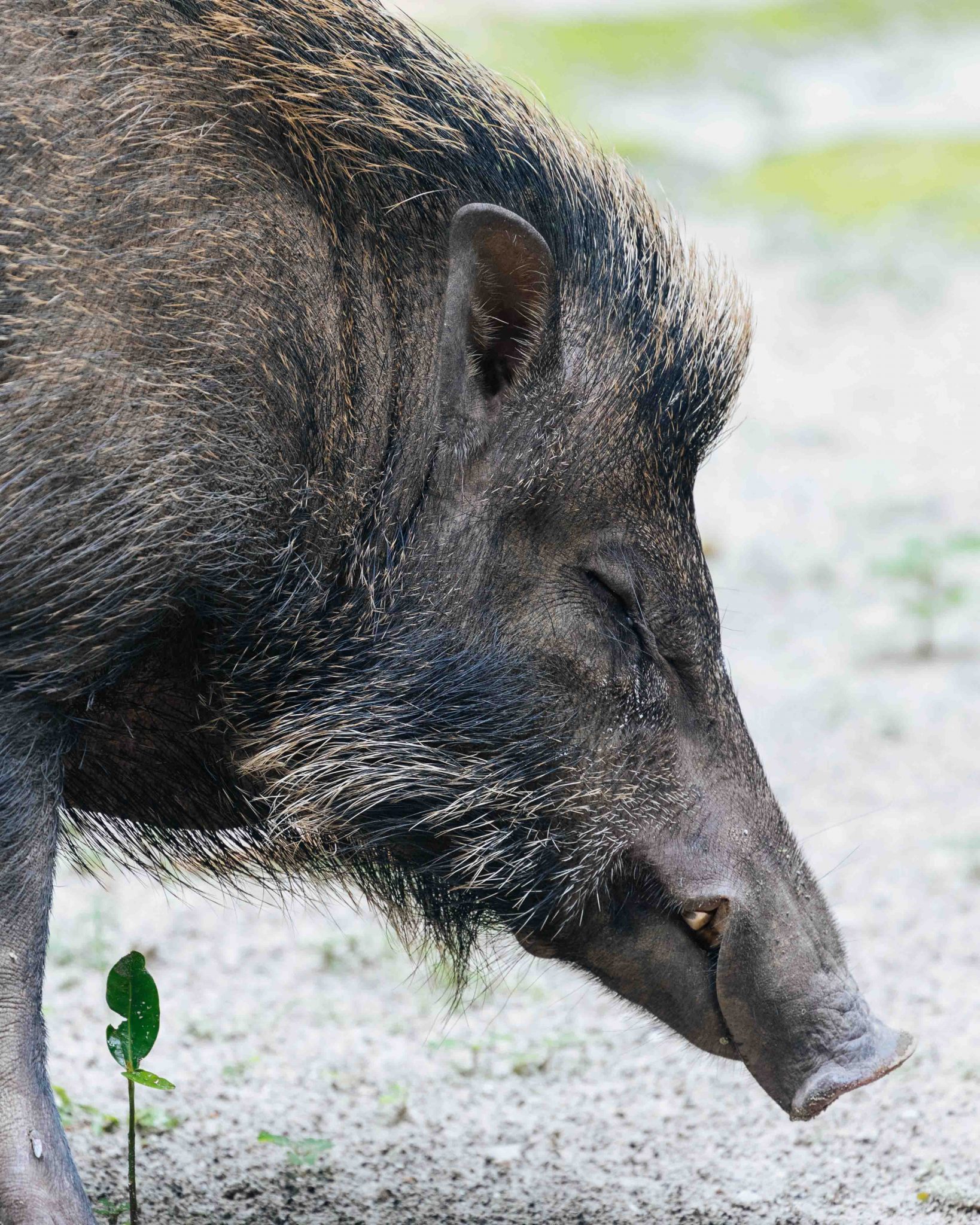
NIKKI Peucang Resort
The Best Beachfront Resort Within Reach of Jakarta
Peucang Island is exceptional for a number of reasons, not the least of which is its impressive diversity of wildlife. One of them is the wild boar. No need to bother to find this animal on Peucang Island. Once the boat you are riding on docked at Peucang Island Pier, it could be that wild boar is the first animal you see. However, there is a lot of news and stories telling that wild boar attack humans and the consequences are fatal. Then if it’s so easy to meet wild boar on Peucang Island, is it safe to travel to this very beautiful island?
Records of wild boar attacking humans have been around since very ancient times. Researchers found paintings with scenes of wild boar attacking humans in a cave located in Bhimbetaka, India, which is estimated to date from 50,000 BC. Until now, news of wild boar attacks on humans is still around. As happened in Kuta Village, Pemalang, in May 2020. As many as three people were injured and had to get stitches on their hands and feet as a result of the attack of starving wild boar that entered the village area. The victim tells that the incident happened suddenly. He entered the kitchen and was immediately attacked by the pig from behind.


Several wild boar attacks were recorded to have ended fatal, mainly because the victim had run out of blood. Sounds really creepy, ya. However, until now there have never been any cases of wild boar attacking visitors on Peucang Island. The estimate was simple because they were used to the presence of humans. Apart from frequently meeting tourists, they meet daily NIKKI Peucang staff and Ujung Kulon National Park (TNUK) officials. Some even have names. Moreover, they have never been harassed or hunted by humans on Peucang Island. Also, they don’t lack a source of food.
But that doesn’t mean visitors don’t need to be vigilant when meeting wild boars on Peucang Island. They are still dangerous wild animals. So, before visiting Peucang Island, we should get, at least, to know them a little and know how to stay safe around them.
The Fast Runner
Wild boar are fast runners. Wild boar running speed can reach 48 km / hour. They can weigh up to 175 kg and a height of up to 1 meter. They have sharp fangs. There is hair on the shoulders that is razor sharp and can stand up when being aggressive, so they are also known as razorbacks. They are omnivorous mammals that eat all types of food. Starting from tubers, nuts, fruit, leaves, eggs, carcasses, mice, insects, and worms. We’ve seen them eat snakes. When looking for food, they sometimes dig the ground with their snouts and leave the ground messy.
Wild boar are animals that are active at night (nocturnal) and can sleep for 12 hours during the day. The males are primarily solitary and appear around herds of wild boars during the breeding season. After the piglets are born, the sow is always with their children to protect them from potential predators. Wild boar is not included in the category of animals protected by law in Indonesia. But wild boars that live on Peucang Island should not be hunted because they live in conservation areas.

Attack Cases
John J. Mayer, in his research entitled Wild Pig Attacks on Humans, summarizes some of the common conditions in the sample cases he studied, which trigger attacks by wild boar against humans.
a. Take a walk alone in the forest.
b. Be threatening or try to catch wild boars.
c. Approaching the wild boar who was injured or blocking their walking path.
How to Stay Safe?
Here are some things that according to John J. Mayer are preventive measures against attacking wild boar:
a. If you are in an area that is a habitat for wild boar, always be aware of the potential for the sudden appearance of wild boar.
b. If you meet a wild boar, don’t come near. Turn around it, give it a wide distance. If we are too close to the boar, slowly back away and do not make any sudden movements that startle the boar, or make any movements that could make the boar feel threatened.
c.If the wild boar is being aggressive or has run after you from a great distance, try to run out of its range. Wild boar can outrun humans. So try to run really fast. If the pig continues to chase you a great distance, it will definitely catch up with you.
d. If the boar is very close and is being aggressive, try to climb the tree and reach a height of at least 2 meters (6 feet) off the ground.
e. If it’s not possible to climb a tree or find a place to hide from the hogs attack, try to fight back with any tool near you.
f. When fighting back, try to keep your feet up and don’t knock down. Wild boar attack victims who fall during the attack receive wounds in various parts of the body and often end up being fatal.
g. If you fall, point your feet over the face or body of the hog and do a continuous kicking motion. Be careful not to get your feet into his mouth.
h. Continue to kick or attack the hog until it stops attacking. Most wild boar attacks last less than a minute.
i. If there is a wound due to a wild boar attack, seek medical attention immediately.